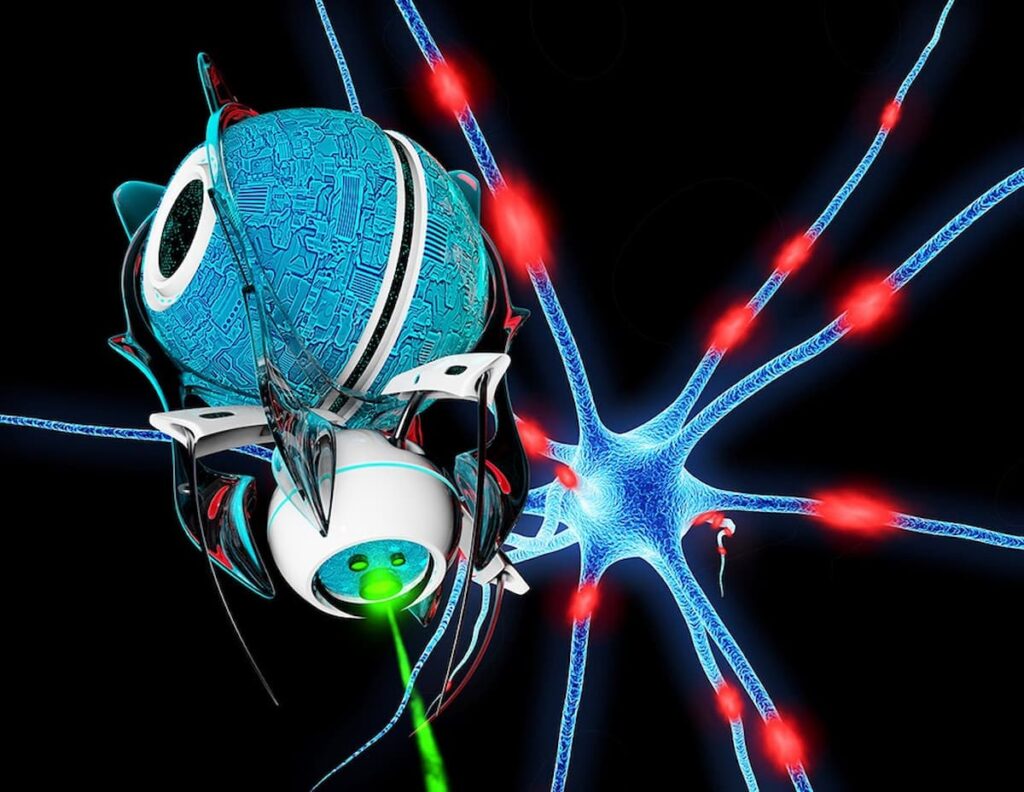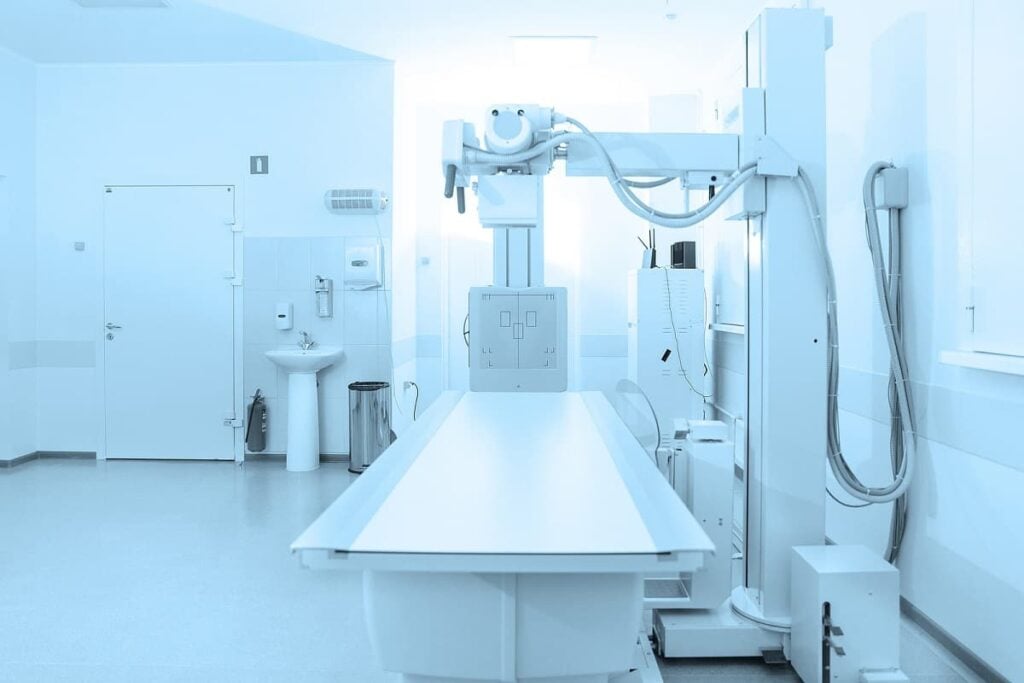4 Ways Nanomedicine Can Diagnose Diseases
Table of contents

There’s a time in our lives when we start going to more funerals than weddings. Friends start complaining about aches and pains. They can’t remember stuff as well as they could. Diseases like cancer start picking them off like a sniper in an action movie. It’s no wonder that our recent series on “When Will There Be a Cure for X” has been so popular with our readers. We can all empathize with illness, even if we don’t have multiple sclerosis or HIV. One of the things that we’re learning is that it’s especially difficult to detect or diagnose many of these diseases. Early diagnosis can literally mean the difference between life or death. That’s why we’re particularly interested in the emerging ways that nanomedicine technology can be used to detect and diagnose disease.
It’s been more than 15 years since we first started writing about nanotechnology and all of the different fields of related technologies that have emerged since then. We recently mused that the term itself, in some ways, has become meaningless because so much of our science and technology occurs on the nanoscale, the microscopic realm of atoms and molecules. We’ve previously given you a detailed definition of nanotechnology from the perspective of the retail investor. In the biological sciences, it can refer to technologies as diverse as gene editing and lab-grown meat.
Nanomedicine for Drug Delivery
However, if we want to go back to the basics of nanotechnology – developing novel nanoscale particles or machines to create new materials or drug delivery systems, for example – then nanomedicine is a great topic to cover. Most of our previous coverage on nanomedicine technology has been on the drug delivery side. For instance, a company called Bind Therapeutics had developed a promising drug delivery platform where nanoparticles called accurins navigate past the body’s immune system to diseased cells where they accumulate before releasing an encapsulated drug. Unfortunately, Bind Therapeutics went bankrupt, leaving our portfolio a little lighter in the process.
That doesn’t mean that nanomedicine is bunk. Indeed, the Food and Drug Administration (FDA) says it has approved more than 60 applications for drug products containing nanomaterials and is only seeing more activity, particularly in the treatment of cancer, because nanoparticles can help target cancer cells while avoiding the toxicity often associated with other treatments like chemotherapy. For example, we’ve written in the past about a couple of European companies called Nanobiotix and MagForce – which also happen to be the names of the new superheroes in a script we’re developing for Marvel – that inject nanoparticles directly into tumors. Then radiation (Nanobiotix) or a magnetic field (MagForce) is applied to help destroy the cancer cells more effectively.
Nanomedicine for Detecting and Diagnosing Disease
While we’re way overdue for an article about the latest and greatest nanomedicine delivery systems, we want to devote the rest of this piece on a lesser known use of nanomedicine – as a diagnostic tool for detecting disease. We recently ran across this application in our list of 15 Nanotechnology Companies Getting Funding in 2018. A Swiss startup called Abionic used nanotechnology to develop a platform for quickly detecting sepsis, a potentially deadly condition caused by the body’s response to an infection that can cause bodily organs to fail. It turns out that Abionic isn’t the only company to develop such a platform.
Nanomedicine System for Detecting Infections
Not only is Boston-based T2 Biosystems developing a platform for diagnosing sepsis and infections such as candidiasis using nanotechnology, but it is a publicly traded company on the NASDAQ. Before you hit the “buy” button, let’s learn a bit more about T2 Biosystems (TTOO) first.
Founded in 2006,

We took a quick look into the financials, and the company’s 2018 third-quarter report wasn’t pretty. It scratched out about $2.5 million against a net loss of $10.8 million, ending the quarter with $60.2 million in the bank against an accumulated deficit of $302 million. The company has repeatedly dipped its beak in the public markets for more money, most recently in June 2018 by raising $49.2 million in a secondary public offering. Valued at $288 million at the time of its IPO, T2 Biosystems has a market cap of less than half that now.
It shows you just how difficult it is for biotech companies to survive, despite FDA approval of several commercial products centered around the company’s T2MR technology, which has been the subject of more than 200 peer-reviewed articles. The T2MR platform deploys nanoparticles with superparamagnetic properties directly into a patient’s sample that enhance the magnetic resonance signals of specific binding agents. If the target pathogen is present, such as a specific species of Candida, the particles bind to it in a cluster like a mosh pit at a punk rock show. The diagnostics take hours rather than days and are reportedly more accurate as well.

We’ll see if T2 Biosystems can stick around long enough to turn a profit.
Nanomedicine System for Detecting Alzheimer’s Disease

Currently, one of the most effective ways to diagnose such neurodegenerative disorders is through a PET scan of the brain, a costly diagnostic test that most of us on the “I hope I don’t get sick” medical plan can’t afford. PET imaging also exposes people to extremely high doses of X-rays that could turn you into Radioactive Man. Alzeca says its platform could potentially catch neurodegenerative diseases a decade or more before symptoms occur.
Nanomedicine System for Detecting Cancer
They say diamonds are forever, so what about nanodiamonds? Apparently, they’re good for detecting cancer. At least that’s the idea behind Bikanta, a Berkeley, California, startup that raised $1.7 million back in 2014 and garnered a bunch of headlines at the time, but has grown pretty quiet in recent years. The website is still up, so maybe somebody is still mining for nanodiamonds in the lab? Anyway, Bikanta uses these nanoparticles like flashlights right in the body to detect specific biological structures or pathways. These nanodiamonds are sensitive to a magnetic field, and their signal fluctuates in response to the magnetism, blinking on and off like Christmas lights.

In an experiment involving mice, above, the nanodiamonds shine like a beacon from the animal’s lymph nodes.
Nanomedicine System for Detecting Everything

Conclusion
The nanotechnology revolution didn’t unfold exactly as we thought it would. And that’s not a bad thing. Sure, we have yet to realize the full potential of nanomaterials like graphene, but technological and scientific progress is rarely linear. It’s based on a ton of failures, the odd breakthrough, and lots of baby steps that sometimes lead you in a completely different direction. While no one thinks we will find one cure for cancer, for example, nanotechnologies that enable early detection of the disease can be just as good as a cure in many cases. Shine on, you crazy nanodiamond.
Sign up to our newsletter to get more of our great research delivered straight to your inbox!
Nanalyze Weekly includes useful insights written by our team of underpaid MBAs, research on new disruptive technology stocks flying under the radar, and summaries of our recent research. Always 100% free.














